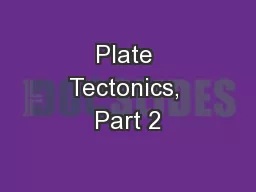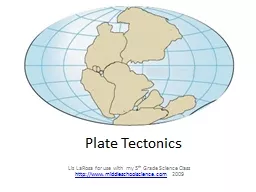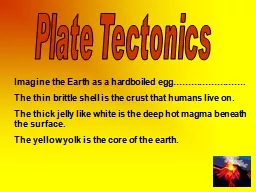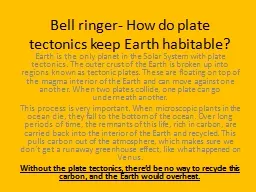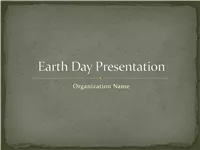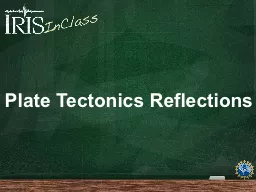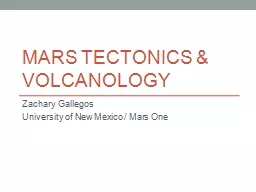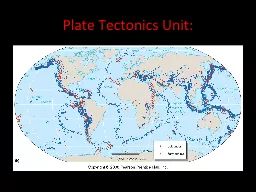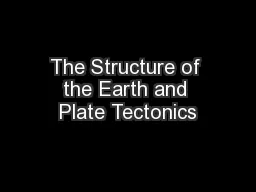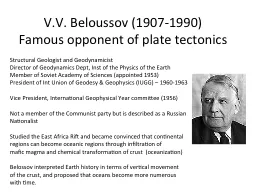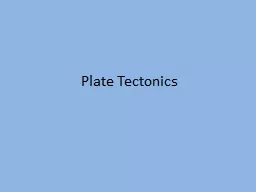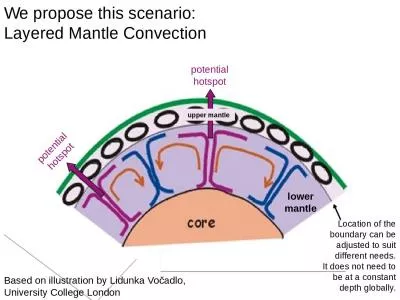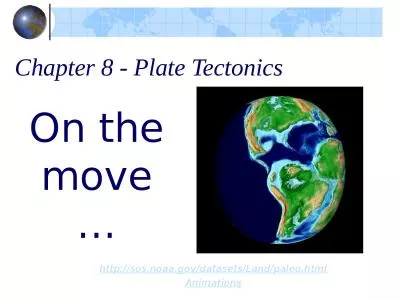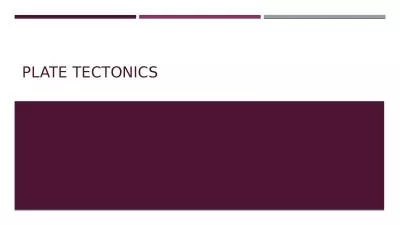PPT-Plate Tectonics, Part 2
Author : mitsue-stanley | Published Date : 2017-07-26
Layers of the Earth 1 2 24 3 24 Plate Tectonics Earths lithosphere is broken up into plates Hot weak asthenosphere allows for plates to move Plates are in motion
Presentation Embed Code
Download Presentation
Download Presentation The PPT/PDF document "Plate Tectonics, Part 2" is the property of its rightful owner. Permission is granted to download and print the materials on this website for personal, non-commercial use only, and to display it on your personal computer provided you do not modify the materials and that you retain all copyright notices contained in the materials. By downloading content from our website, you accept the terms of this agreement.
Plate Tectonics, Part 2: Transcript
Download Rules Of Document
"Plate Tectonics, Part 2"The content belongs to its owner. You may download and print it for personal use, without modification, and keep all copyright notices. By downloading, you agree to these terms.
Related Documents

